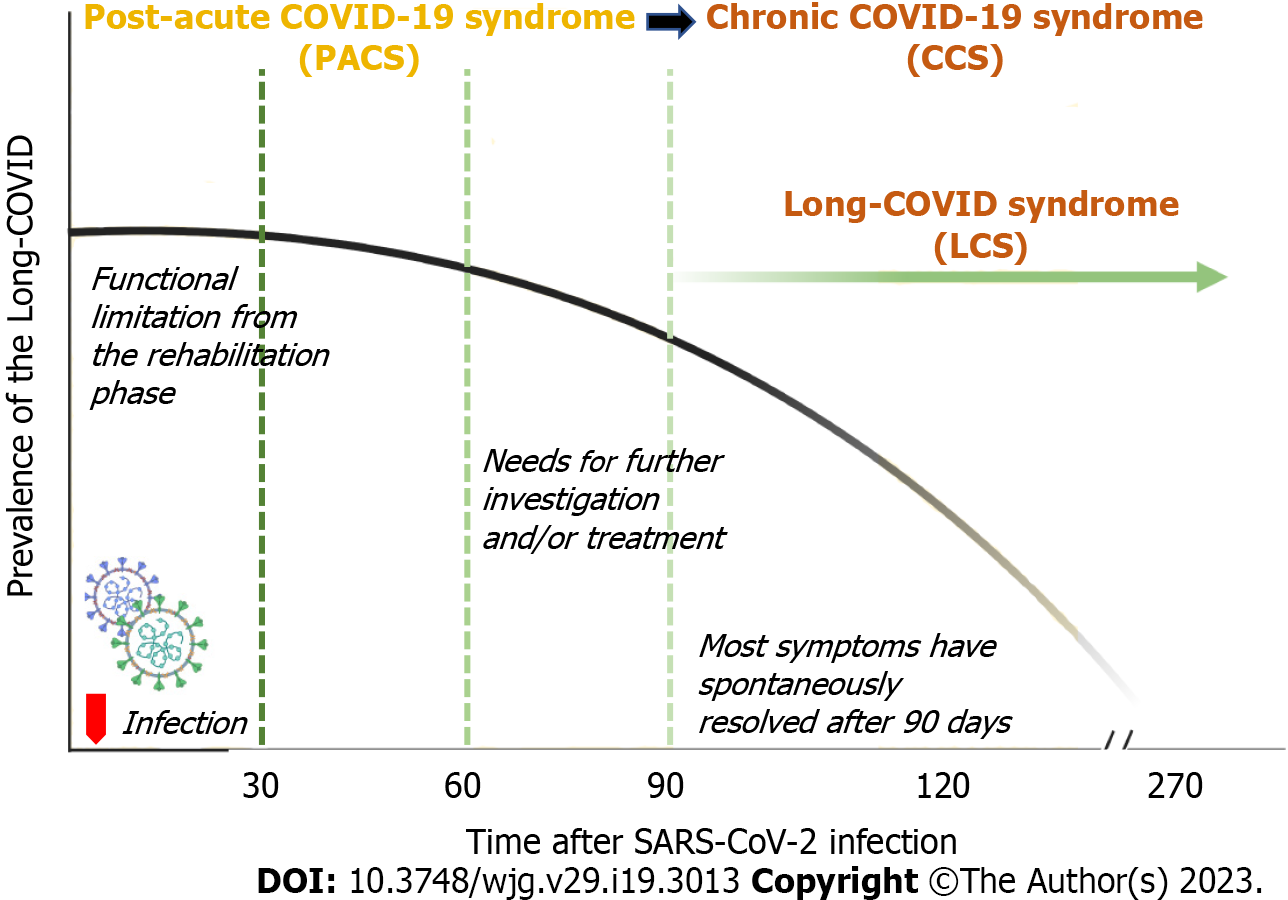Copyright
©The Author(s) 2023.
World J Gastroenterol. May 21, 2023; 29(19): 3013-3026
Published online May 21, 2023. doi: 10.3748/wjg.v29.i19.3013
Published online May 21, 2023. doi: 10.3748/wjg.v29.i19.3013
Figure 1 Flow chart showing the number of eligible participants and the final cases enrolled in the study.
COVID-19: Coronavirus disease 2019.
Figure 2 The burden of gastrointestinal manifestations of prolonged symptoms after corona virus disease 2019.
Post-acute sequelae were followed from 30 d after infection until the end of follow-up. A: Comparison of the prevalence and characteristics of prolonged symptoms after corona virus disease 2019 (Long-COVID) among dialysis-dependent (HD, n = 293; PD, n = 21) and kidney transplant recipients (n = 7); B: Time course of individual Long-COVID syndrome and resolution of symptoms. The color shading indicates Long-COVID syndrome that resolved within 90 d; C: Risk factors for gastrointestinal manifestations of Long-COVID. Long-COVID: Prolonged symptoms after corona virus disease 2019; CRP: C-reactive protein (high CRP > 5 mg/L, D-dimer > 500 ng/mL).
Figure 3 Illustration of the proposed new nomenclature for clinical syndromes following post-corona virus disease 2019 infection.
We propose that the term post-acute-corona virus disease 2019 (COVID-19) syndrome should describe illness occurring within 90 d from the onset of COVID-19 infection. Chronic COVID-19 syndrome (CCS) would then be a modified classification that refers to the clinical syndrome thereafter. By contrast, the term Long-COVID syndrome should be reserved for patients showing CCS lasting for at least six months. In the case of severe symptoms, the investigation and corresponding treatments should be addressed at 60 d to prevent serious CCS. Long-COVID: Prolonged symptoms after corona virus disease 2019.
- Citation: Chancharoenthana W, Kamolratanakul S, Leelahavanichkul A, Ariyanon W, Chinpraditsuk S, Saelim R, Vadcharavivad S, Phumratanaprapin W, Wilairatana P. Gastrointestinal manifestations of long-term effects after COVID-19 infection in patients with dialysis or kidney transplantation: An observational cohort study. World J Gastroenterol 2023; 29(19): 3013-3026
- URL: https://www.wjgnet.com/1007-9327/full/v29/i19/3013.htm
- DOI: https://dx.doi.org/10.3748/wjg.v29.i19.3013











